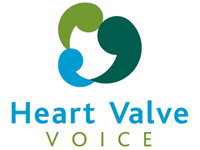
Dr Madalina Garbi: ‘Guidelines developed for patients with patients’

In England, clinical guidelines are developed by an independent non-departmental public body, the National Institute for Health and Care Excellence (NICE). NICE appoints an independent advisory committee for the guidelines, comprising healthcare professionals as well as lay representatives with lived experience, assisted by teams whose work covers evidence review and support, health economic evaluation, guideline recommendation development and quality assurance. Registered stakeholders with an interest in the guideline topic, or representing people whose practice or care may be affected by the guideline, are consulted on the draft guidelines.
NICE guidelines help health professionals deliver the best possible care in the National Health Service (NHS), taking into consideration individual needs as well as the needs of the overall population, to gain the most benefit for the greatest number of people, with fair distribution of available resources. Therefore, NICE guidelines reflect both the clinical effectiveness and the cost effectiveness of interventions. In contrast, other international guidelines reflect only the clinical effectiveness of interventions with no concern for cost, availability of resources and implementation inequalities. The implementation of those guidelines varies with the healthcare system, the health insurance system and socioeconomic constraints affecting a particular nation or a certain individual. It also varies with availability of services, expertise and technological resources. Cost-effectiveness, in those settings, is addressed separately, by the Appropriate Use Criteria (AUC), defined to address the overuse or underuse of healthcare resources. NICE Guidelines identify and aim to reduce health inequalities; all interventions recommended by the NICE Guidelines will be provided to all people in need of those intervention, free at the point of care.
Lay representatives contribute to discussions in the guideline committee meetings. Furthermore, patients and patient advocates contribute through consultation to the review of the initial draft.
The clinical-effectiveness of an intervention is determined based on relevant, reliable and robust clinical evidence, identified using systematic, transparent and reproducible literature searches. The quality of the evidence is assessed for potential bias through internationally accepted methods of critical appraisal of study design, methods and certainty of findings. The certainty or confidence in the evidence is graded from very low (any estimate of effect is very uncertain and is likely to change the recommendation) to high (further research is unlikely to change the recommendation).
The cost-effectiveness of an intervention is determined based on a single overall health outcome and the cost per unit of outcome based on relevant prices. The health effect is expressed as QALYs (quality-adjusted life years), an outcome measure reflecting both length and quality of life gained as a result of an intervention, which is obtained by weighting each estimated year gained with a quality of life score. Consequently, 1 QALY equals 1 year of life in perfect health. The QALY is an outcome measure comparable between different populations and disease areas. To ensure equity, a QALY is deemed to be of equal value for NICE economic evaluations regardless of sociodemographic characteristics, age or level of health of individuals. The NICE guidelines do not only address physicians and other healthcare professionals involved in the diagnosis and management of a certain condition; they also address patients, their families and carers, and organisations representing their interests. This explains the writing style of the guidelines, using clear, precise, concise and consistent wording and expressing concepts in a standard way without jargon. The language is person–centred, respectful, empathetic and inclusive.
In summary guideline recommendations are for individual health and social care professionals, who should use them in their work together with their own judgement and discussion with people using services. Some recommendations are for local authorities, commissioners and managers, and cover planning, commissioning and improving services; others are for providers (organisations providing services), schools, and local and national organisations and partnerships in the public, private and voluntary sectors. Guideline recommendations are also useful for people who use health and social care services (including people who purchase their own social care), their families and carers, and organisations representing their interests.
Consultant Cardiologist Dr Madalina Garbi
Royal Papworth Hospital, Cambridge University Health Partners, Cambridge, UK
The British Heart Valve Society President
Disclosure: Madalina Garbi was The NICE Topic Advisor for the first NICE Guidelines on Heart Valve Disease
Latest News
Heart Valve Voice Celebrates Milestone: SLOW Symptom Awareness Video Reaches One Million Views
Heart Valve Voice proudly announces that its educational video "SLOW" has reached an impressive milestone [...]
Dr Yassir Javaid: Recognising and Addressing Symptoms of Heart Valve Disease
As a clinician who works across primary and secondary care, I've encountered countless patients whose [...]
Dr Madalina Garbi: ‘Guidelines developed for patients with patients’
In England, clinical guidelines are developed by an independent non-departmental public body, the National Institute [...]









